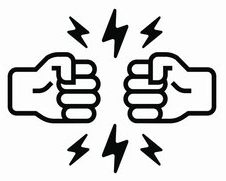What is vasovagal syncope pathophysiology?
What is vasovagal syncope pathophysiology?
Vasovagal syncope (vay-zoh-VAY-gul SING-kuh-pee) occurs when you faint because your body overreacts to certain triggers, such as the sight of blood or extreme emotional distress. It may also be called neurocardiogenic syncope. The vasovagal syncope trigger causes your heart rate and blood pressure to drop suddenly.
What causes positional syncope?
Postural syncope (also called postural hypotension) Postural syncope is caused by a sudden drop in blood pressure due to a quick change in position, such as from lying down to standing. Certain medications and dehydration can lead to this condition.
Is neurocardiogenic syncope the same as vasovagal syncope?
Neurocardiogenic syncope, also known as vasovagal neurocardiogenic syncope, is a fainting spell that occurs when the body overreacts to certain triggers, like intense emotion, the sight of blood, extreme heat, dehydration, a long period of standing or intense pain.
Is syncope a neurological symptom?
Syncope isn’t normally a primary sign of a neurological disorder, but it may indicate an increased risk for neurologic disorders such as Parkinson’s disease, postural orthostatic tachycardia syndrome (POTS), diabetic neuropathy, and other types of neuropathy.
Does syncope affect the brain?
Key points about vasovagal syncope Vasovagal syncope is the most common cause of fainting. It happens when the blood vessels open too wide and/or the heartbeat slows, causing a temporary lack of blood flow to the brain. It’s generally not a dangerous condition.
What are the common causes of syncope of unknown origin?
The prevalence of psychiatric illness in patients with syncope of unknown origin is around 24%.27 Hyperventilation, particularly in panic disorder, leads to hypocapnia, causing a transient increase in cerebrovascular resistance coupled with simultaneous peripheral vasodilatation.
What causes syncope in left ventricular outflow tract?
Obstruction to blood flow from the left ventricular outflow tract classically brings about syncope on exertion. This heralds a poor prognosis in severe aortic stenosis and warrants urgent valve replacement. Aortic stenosis may lead to syncope by various mechanisms (box 2).
Which is the most common haemodynamic response in syncope?
The haemodynamic responses evoked in neurally mediated syncope may be predominantly vasodepressor, cardioinhibitory, or mixed. The mixed response is most common, although the vasodepressor component of the mixed response appears to be the dominant factor in up to 85% of affected patients.
What makes orthostatic syncope different from neurocardiogenic syncope?
There is no vagal hyperactivity associated with this venous pooling and this distinguishes orthostatic syncope from neurocardiogenic syncope. Orthostatic syncope may be the consequence of transient or chronic volume depletion or abnormal vasomotor compensatory mechanisms.
